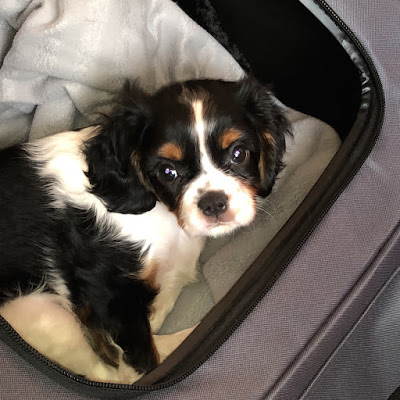As a fan of 1930s quilt blocks, I've been tracking the publication date of
The Kansas City Star Quilts Sampler and jumped at the chance to review it! It's a mix of archive patterns from the Kansas City Star newspaper with modernised instructions and a history lesson. In the 1920s American newspapers started to regularly feature quilt patterns. This was popular with readers and the Kansas Star column started in 1928 and lasted until 1961 when they were replaced with TV listings- a sign of changing times. The blocks featured in this book are a range of sizes just like the originals, although the sizes have been standardised a little, and there's an option in the last few pages to combine them all in a sampler.
The blocks are presented in decade order from a few 1920s blocks, a large selection of 1930s and 40s blocks during the height of the quilt revival, a smaller range from the 1950s and three blocks from the 1960s. It's a detailed book with 64 blocks and 263 pages in all.
Throughout the book, there are regular profile pages compiled by quilt historian,
Barbara Brackman and these are a fascinating read. They are largely stories of the women, like Edna Marie Dunn, who helped to shape the quilting industry as we know it today: developing illustration aesthetics and quilt block design, creating businesses and methods of producing patterns like mail order and syndicating content to reach more customers.
Each block includes a snippet of the original pattern illustration and instructions alongside the 21st-century version. Construction is largely through full-size templates which can be found just after each block instructions so you do need to be happy to use this method to make the majority of the blocks. Many designs are 12" x 12" blocks. The sampler at the back of the book is made by changing the sizes of many of the blocks enlarging and reducing when you print off template copies.

There are a few blocks which have rotary cutting instructions or combine templates and rotary cutting. Only one block is foundation paper pieced (Carnival Time) and there were some other blocks that would've benefited from FPP rather than individual templates ( Crazy Anne #2 for example) but that's a subjective viewpoint! The templates could also be traced without seam allowances for English Paper Piecing. There's one appliqued block (1955 Rose Cross) and one other block with an appliqued element (1936 White Lily).
I chose a couple of blocks, starting with 1941 Radio Windmill. I still have a stack of 1920s Farmer's Wife 6" blocks from
2011 and want to add these together to make a small quilt so I opted for similar colours. I used a scanner to copy the templates and then printed at 50% to produce a 6" x 6" finished block. I made templates from plastic, drew on the reverse of the fabric and add seam allowances when I cut the fabric pieces.
This block uses partial seams and brief instructions are given. All the book instructions assume prior quilting knowledge. You can find a beginner tutorial for partial seams
here. This block needs careful seam point alignment so I use vertical pinning to match the points and then just a single pin at the end of each seam.
I did make a slight error not realising that there were two mini block layouts needed to create the final layout so my food fussy cutting which was all in one direction has had a bit of spin but I love the final 6" block. Japanese prints throughout and the strips and the food print were from
Rosegarden Patchwork.
The second block is 1953 Eight-Point Snowflake and
I have sewn this design before but many years ago and in a bigger size. Again, I reduced the templates by 50% for a 6" finished block. This block is all about the Y seams which is a technical challenge I really enjoy! The instructions show the direction of each seam but otherwise, you need to be familiar with inset seams
(I wrote a blog post on Y seams here) and these could also be hand sewn which is a great way to familiarise yourself with this sort of precision sewing. A couple of the fabrics I used were from a few years ago when I started to my original 1920s blocks- the garden print, Denyse Schmidt floral and centre line print. The gingham is from
Rosegarden Patchwork.
Here are the Kansas City Star blocks mixed in with my other blocks. I do feel like adding to this so I think I will keep dipping into the book and sew up some other designs from across the decades.
Thank you to
Search Press UK for sending me a free copy to review. This is definitely my kind of quilting book. I love the history additions and there are some quirky block choices in with the more familiar selections.





















